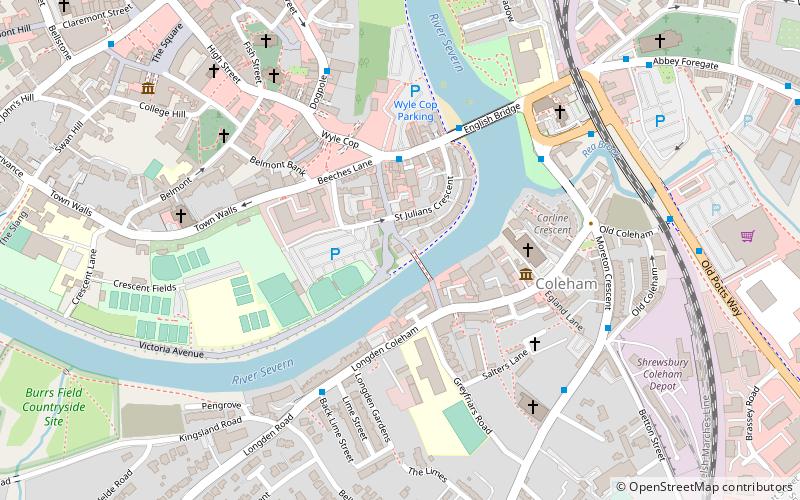Shrewsbury: Church
Places and attractions in the Church category
St Chad's Church
St Chad's Church occupies a prominent position in Shrewsbury, the county town of Shropshire. The current church building was built in 1792, and with its distinctive round shape and high tower it is a well-known landmark in the town.
Shrewsbury Cathedral
Spireless Roman Catholic cathedral The Cathedral Church of Our Lady Help of Christians and Saint Peter of Alcantara, commonly known as Shrewsbury Cathedral, is a Roman Catholic cathedral in Shrewsbury, England.
St Mary's Church
St Mary's Church is a redundant Anglican church in St Mary's Place, Shrewsbury, Shropshire, England. It is recorded in the National Heritage List for England as a designated Grade I listed building, and is under the care of the Churches Conservation Trust, the Trust designated St Mary's as its first Conservation Church in 2015.
Barnabas Community Church
Barnabas Community Church is an independent, charismatic evangelical, Church in Shrewsbury, England, associated with the British New Church Movement. It is part of the Newfrontiers family of churches and a member of the Evangelical Alliance. The congregation meets every Sunday at 10am at the Barnabas Centre, in Coleham.
Shrewsbury Unitarian Church
Shrewsbury Unitarian Church is a Grade II listed building situated on the High Street in Shrewsbury, England. The meeting house was founded in its present site in 1662 by the Revd Francis Tallents and the Revd John Bryan, two dissenters ejected from St Mary's Church, Shrewsbury and St Chad's Church, Shrewsbury respectively.
Greyfriars
Greyfriars, Shrewsbury was a friary in Shropshire, England. Owen de la Pole, also known as Owain ap Gruffydd ap Gwenwynwyn, the last Prince of Powys, was buried here, as was his daughter Hawise Gadarn, her husband John Charleton, 1st Baron Cherleton, and Owen's father Gruffydd...
Christ Church
The parish of Christ Church, Shelton and Oxon, lies within the Diocese of Lichfield, in the county of Shropshire, England. The parish church was built in 1854 by Edward Haycock Snr in Early English style with many lancet features.
Map







